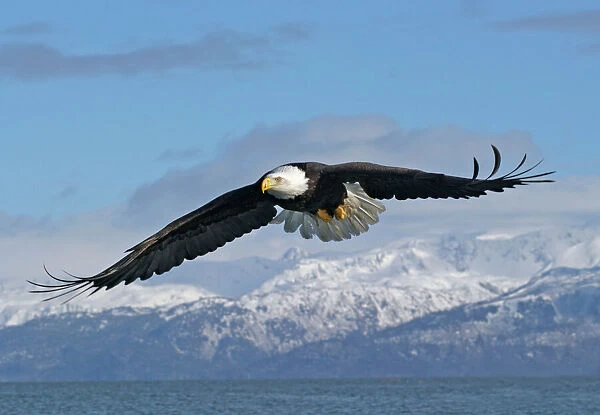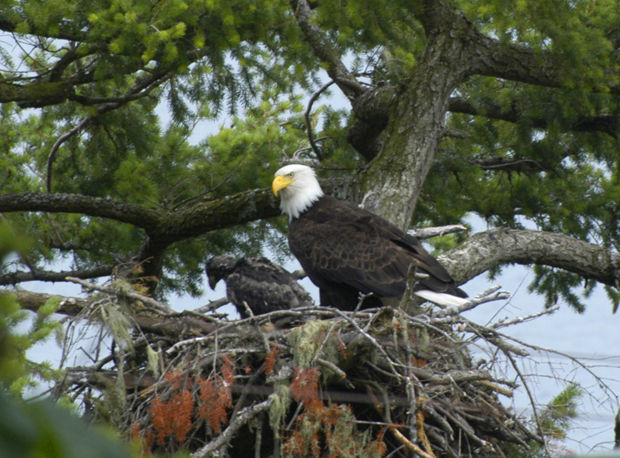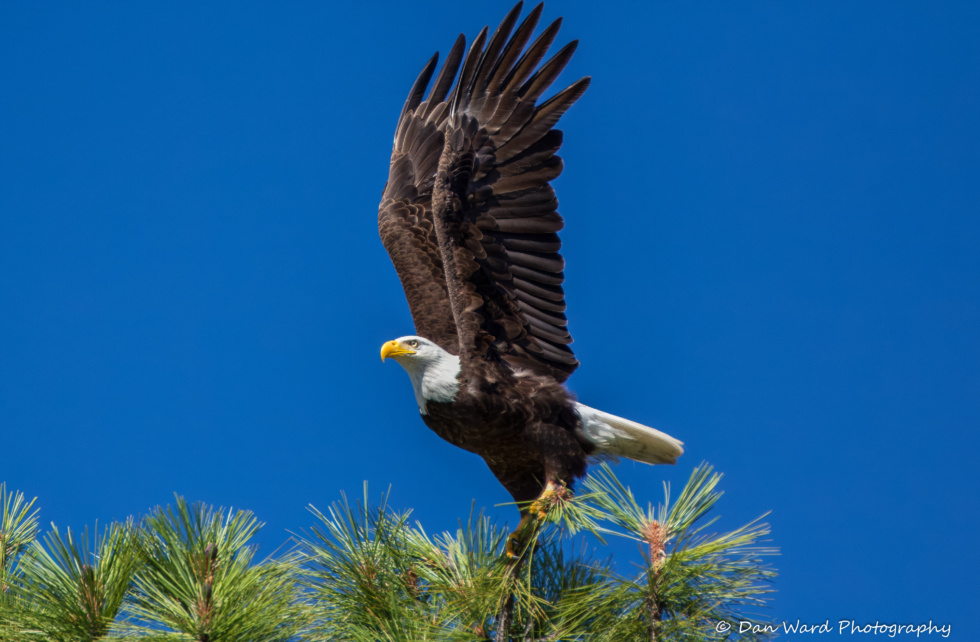A Symbol in the Sky
There are few birds that command the imagination quite like the bald eagle. With its massive wingspan, piercing golden eyes, and snow-white head, the bald eagle exudes a sense of power and grace that has made it the enduring symbol of the United States. Yet beyond the patriotic emblem, the bald eagle is a real and complex creature. It soars above rivers, lakes, and coastlines, riding thermals and scanning the waters below for prey. This species represents freedom not just metaphorically, but literally — its ability to glide effortlessly for hours embodies a kind of untethered dominance that few other animals can match. As apex predators of the sky, bald eagles help maintain ecological balance, and their presence is often an indicator of a healthy, functioning ecosystem.

The Meaning Behind the Name
Despite what the name suggests, the bald eagle is not actually bald. The name 'bald' derives from an older English word, 'balde', meaning 'white' or 'shining'. This refers to the brilliant white plumage on the eagle’s head and tail, which contrasts strikingly with its otherwise dark brown body and wings. Early European settlers in North America used the word to describe the distinctive appearance of the bird. Interestingly, young bald eagles don’t sport this characteristic look; they only develop the iconic white head after about four to five years of age. Before that, they’re mottled brown and often mistaken for golden eagles — a reminder of the slow, dramatic process of maturing into a true symbol of strength.

Biology and Behavior of the Bald Eagle
Bald eagles (Haliaeetus leucocephalus) are among the largest birds of prey in North America. Adults can reach up to 3 feet (1 meter) in height, with a wingspan of up to 7.5 feet (2.3 meters). Their beaks are large and hooked, perfectly evolved for tearing into fish, which make up the majority of their diet. Although they prefer to hunt live fish by swooping down from perches or mid-flight, bald eagles are opportunistic and will scavenge or steal from other birds — especially ospreys. Known for their remarkable vision, they can spot prey from several hundred feet in the air. Their nests, called aeries, are among the largest of any bird species, often measuring over 8 feet wide and weighing a ton. These nests are typically built high in tall trees or on cliff edges and reused year after year.

The Bald Eagle’s Habitat and Range
The bald eagle's range spans across most of North America, from Alaska and Canada down to northern Mexico. They are most commonly found near large bodies of open water such as lakes, rivers, and coastal marshes — areas that offer abundant food sources and tall perches for nesting. While they once thrived across much of the continent, bald eagles saw drastic population declines during the mid-20th century, primarily due to habitat destruction, hunting, and the widespread use of the pesticide DDT, which weakened eggshells and decimated hatchling survival rates. Today, thanks to conservation efforts, their numbers have rebounded, and they are once again common sights in national parks, river valleys, and wilderness areas.

Conservation: From Endangered to Reborn
The bald eagle’s conservation story is one of the greatest wildlife comebacks in modern history. In the 1960s, their population plummeted to the brink of extinction in the contiguous United States, with fewer than 500 nesting pairs recorded. The banning of DDT in 1972, along with strict protection under the Bald and Golden Eagle Protection Act and the Endangered Species Act, led to the gradual recovery of the species. Captive breeding programs, habitat protection, and public awareness campaigns all contributed to their resurgence. In 2007, the bald eagle was officially removed from the U.S. federal endangered species list, though it remains protected by law. Its return is often cited as a shining example of how legal action, science, and collective willpower can reverse environmental collapse.

Cultural and Spiritual Significance
Long before it became the emblem of the United States, the bald eagle held deep spiritual significance for many Indigenous tribes across North America. To many Native peoples, the eagle is a sacred messenger between the physical and spiritual worlds. Its feathers are revered in ceremony and ritual, representing honor, courage, and connection to the divine. The eagle’s ability to soar to great heights made it a symbol of vision, strength, and wisdom. Even today, bald eagle feathers are considered so spiritually powerful that they are regulated under U.S. law and can only be legally possessed by members of federally recognized tribes. This cultural depth adds another layer of reverence to the bird — it is not only a national symbol, but also a spiritual one.

Conclusion: Majesty That Soars
The bald eagle remains an icon that transcends borders and ideologies. It’s a symbol of wildness, resilience, and the untamed beauty of the natural world. It reminds us of the importance of stewardship — how quickly species can be lost, and how, with care, they can be brought back. Its story is not just a tale of biology, but of identity, politics, spirituality, and survival. To see one glide overhead is to witness history in motion, wings extended like a banner of hope.
